Last updated: April 29, 2025
Article
Desert Varnish
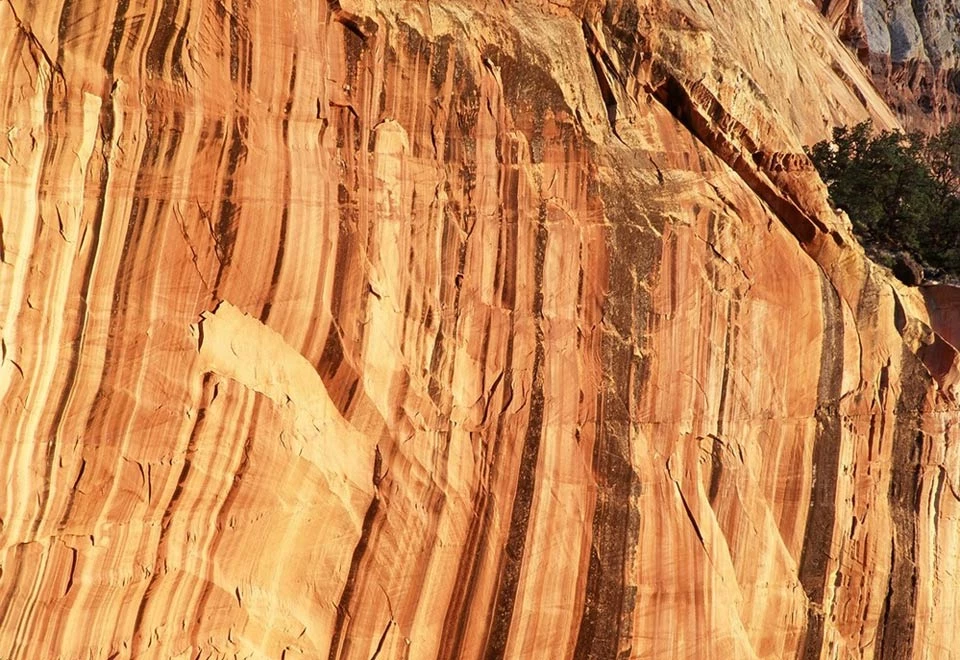
NPS Photo
Introduction
Many exposed rock surfaces in national parks on the Colorado Plateau including Arches, Canyonlands, Capitol Reef, and Zion have dark coatings or orange to dark brown or black streaks darkening what would be lighter-colored rock surfaces. Similar rock surface coatings are found in other parks in arid or semi-arid climates including Death Valley National Park and Petroglyph National Monument.
These surface coatings are generally called desert varnish, but they are typically complicated mixtures of several different types of rock coatings including rock varnish. Scientists have described a total of at least 14 types of rock coatings, many of which may be components of the patinas known as desert varnish.
Desert varnish forms on most bare rock surfaces that are resistant to weathering, rock decay, and erosion. The coatings are thin and are compositionally distinct from the underlying bedrock. They contain material derived from water that flows over rock surfaces, windblown dust, and microorganisms including fungi living on rock surfaces.
Colors found in desert varnish consist predominantly of orange, red, to brown colors depending on its composition and mineral components. Sometimes it has a streaky appearance due to preferential formation where water flows down cliff faces or because of compositional variations.
Rock Surface Coatings
Most occurrences of desert varnish consist of multiple types of coatings that have formed in the same area.
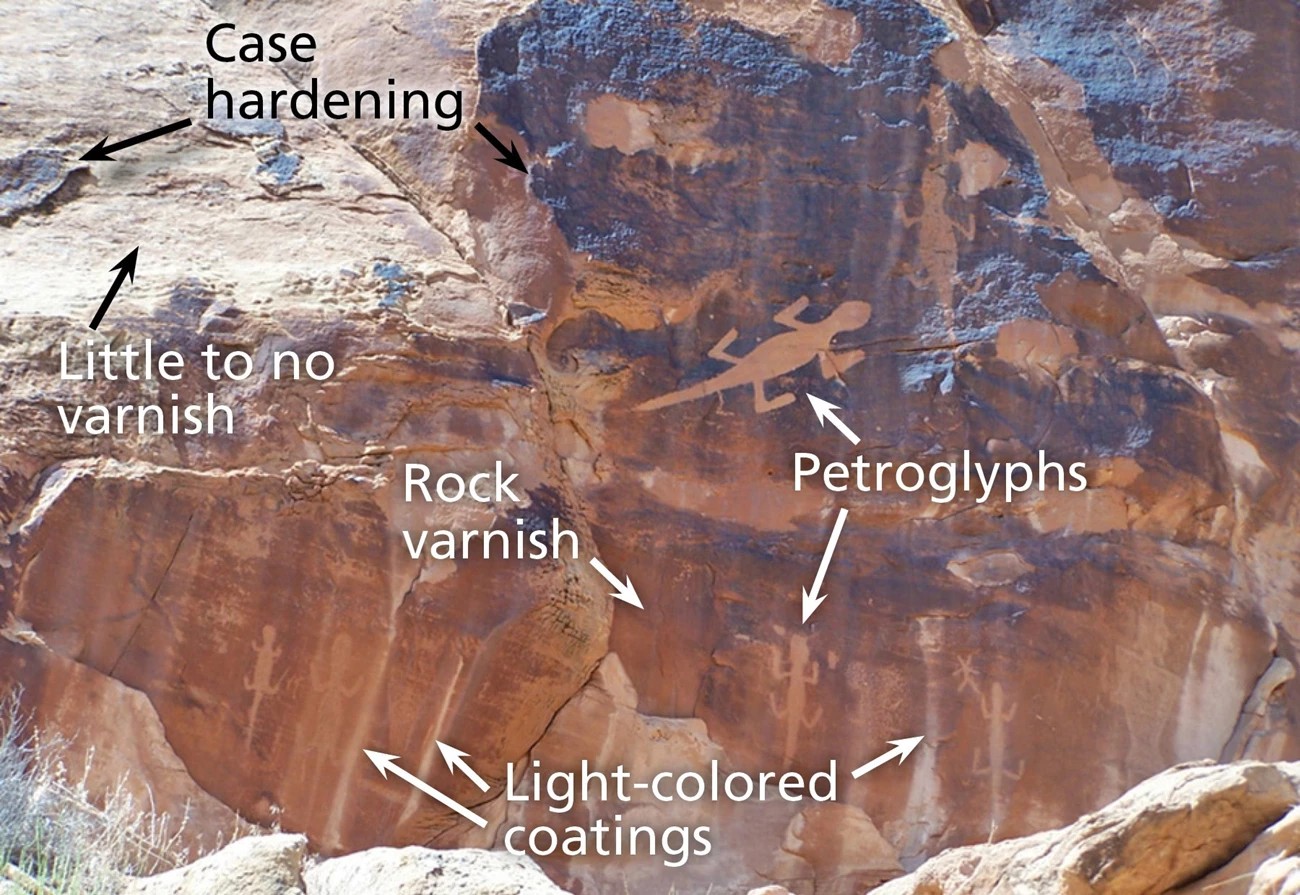
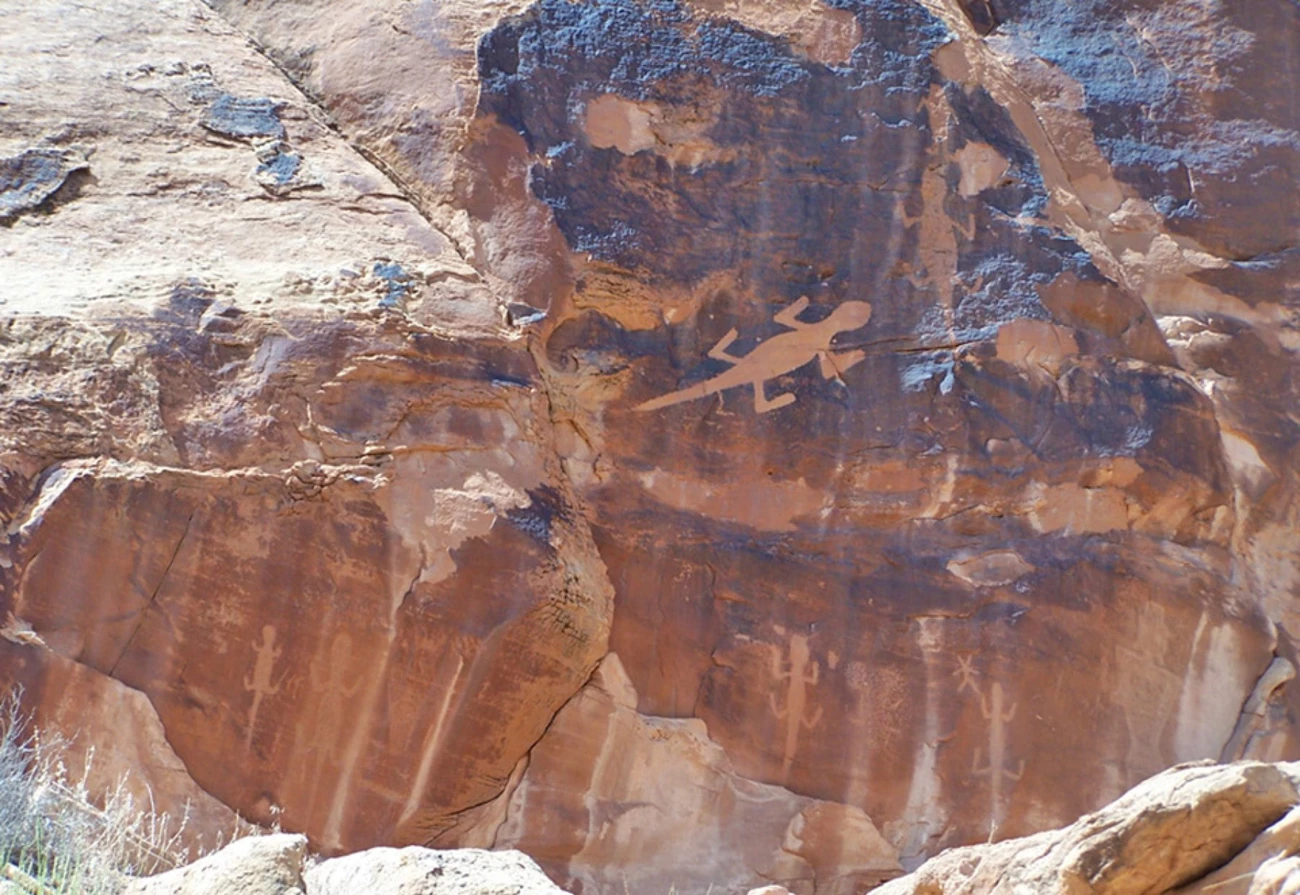
Left image
Rock surface showing petroglyphs and several types of rock coatings in Dinosaur National Monument. Rock coatings include rock varnish, case hardening, and light-colored coatings.
Right image
The light-colored coatings may consist of silica glaze and/or oxalate coatings. Unweathered bedrock is off-white in color.
Major Types of Rock Surface Coatings that Make Up Desert Varnish:
-
Rock varnish consists predominantly of clay minerals with a substantial proportion of iron and manganese oxides and minor amounts of other components. It ranges in color from red to black with higher concentrations of manganese producing varnishes that are more black in appearance. During desert varnish formation, manganese and iron oxides bind the clay minerals to the surfaces. The mechanisms that concentrate manganese oxides in rock varnish are not completely understood, but it is likely that involves physical/chemical processes as well as biological activity of some microorganisms. Rock varnish can form in any environment, but is prevalent in desert climates where bare rock surfaces are common. (Note: Some users use the terms rock varnish and desert varnish interchangeably. This article differentiates between rock varnish in a strict sense (stricto sensu) and the popular use of the term desert varnish for all dark rock surface coatings in arid environments regardless of specific type.)
-
Case hardening is a hard protective coating on rock surfaces that occurs during weathering. It results from the addition of materials (iron or manganese oxides, silica, and/or other compounds) that act as cements to the surface of the rock, hardening it and making it more resistant to further weathering or erosion. Surfaces that have been case hardened may be flat where they originally formed in a joint (rock fracture) and may stand out in relief relative to softer bedrock. Case hardened surfaces also often have other coatings on them.
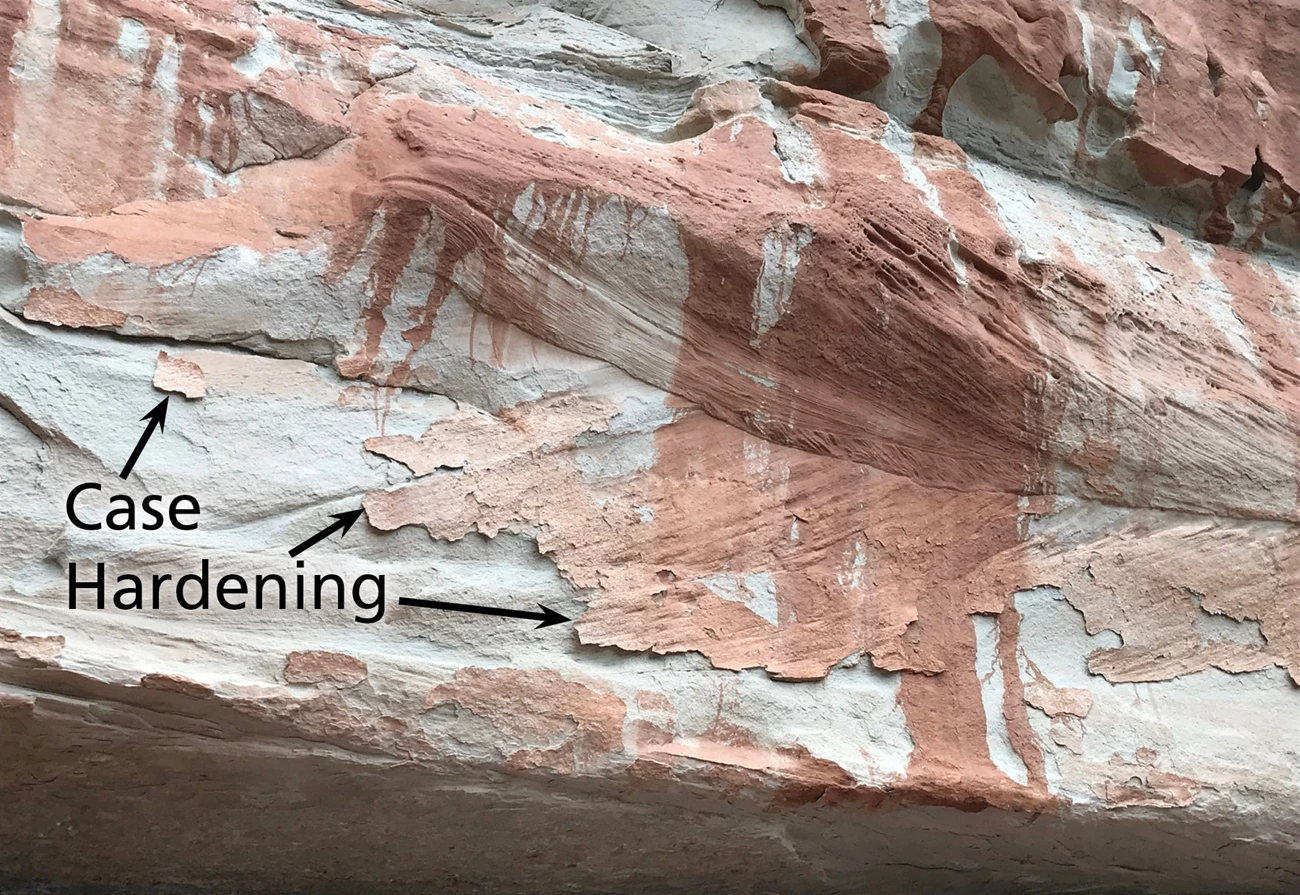
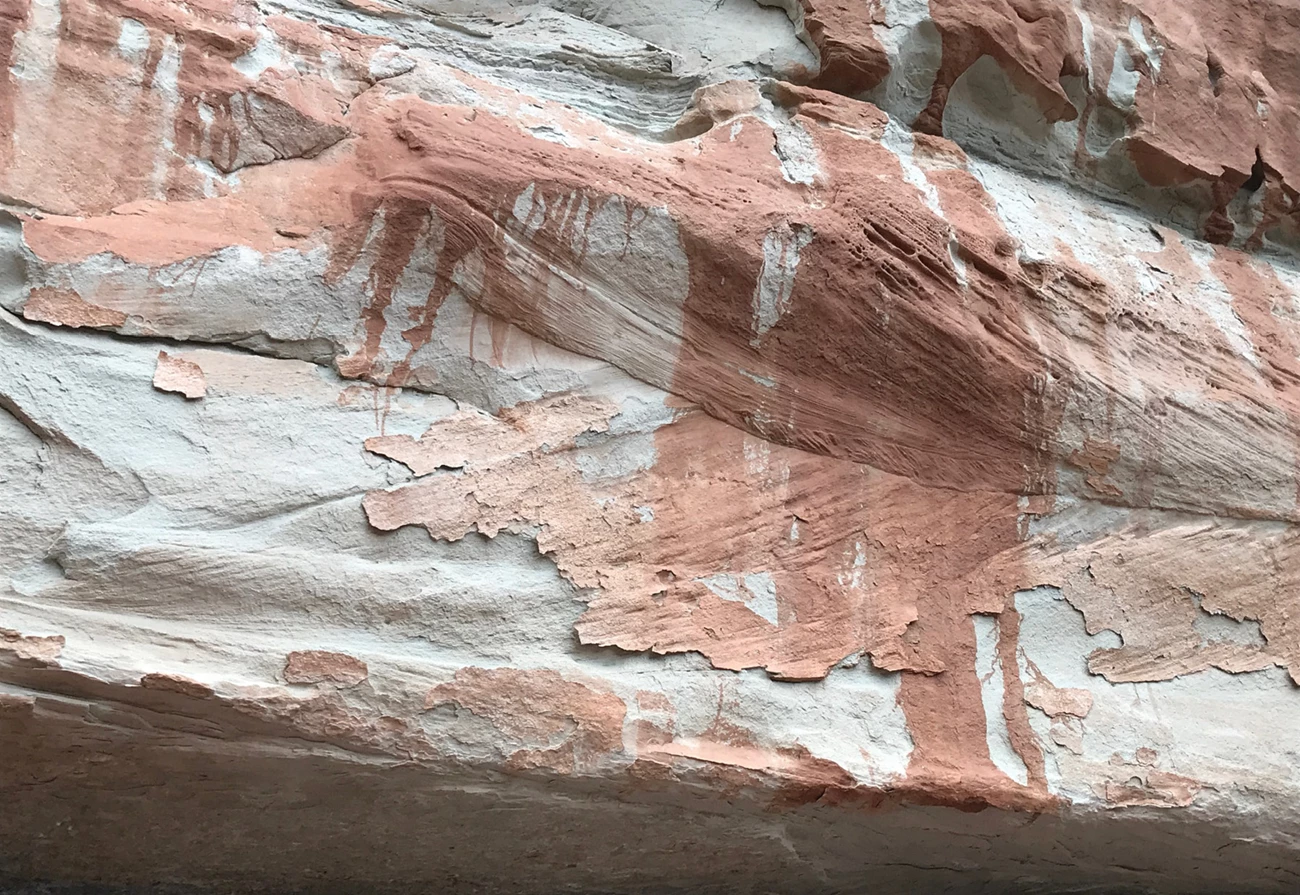
Left image
The red surface coating likely consists of clay minerals and iron oxides. It formed where water flows down the cliff face.
Credit: Photo by Allyson Mathis (copyright).
Right image
Areas of case hardening are more resistant to erosion than the underlying bedrock. Canyonlands National Park, Utah.
Credit: Photo by Allyson Mathis (copyright).
-
Heavy metal skins consist almost exclusively of iron, manganese, and other metals (e.g., they do not include clay minerals). Many of the black tapestries that are found on many bare sandstone cliffs and above rock alcoves that show where water flows down them during storms are heavy metal skins. (Other black-colored water streaks may be coatings of black fungi mixed with minerals.)
-
Silica glaze is a usually light-colored surface coating common on sandstone surfaces like those in most national park sites on the Colorado Plateau, although it may be dark when iron or manganese oxides are incorporated within it. Silica is readily available on sandstone surfaces. Coatings of amorphous silica and aluminum may have a shiny luster.
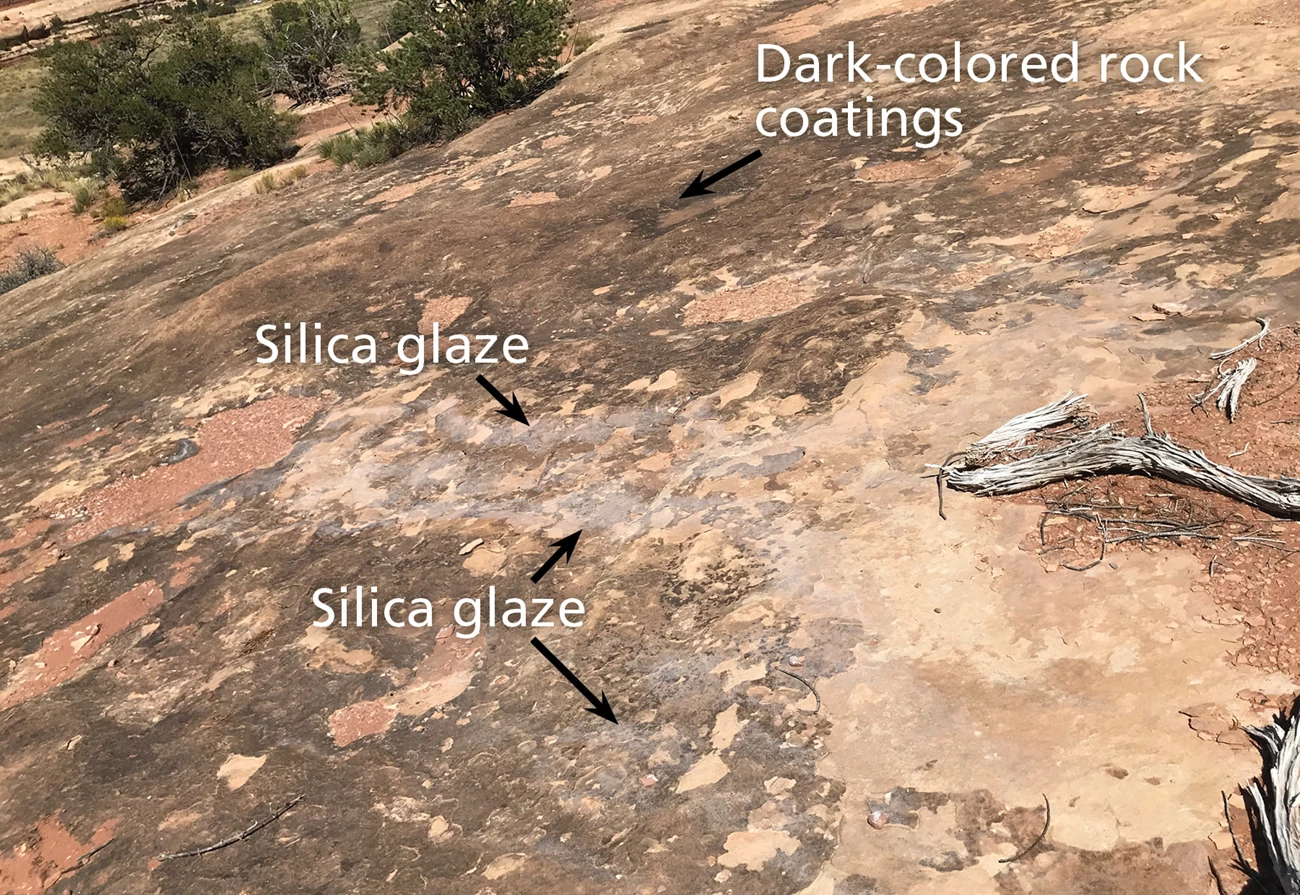
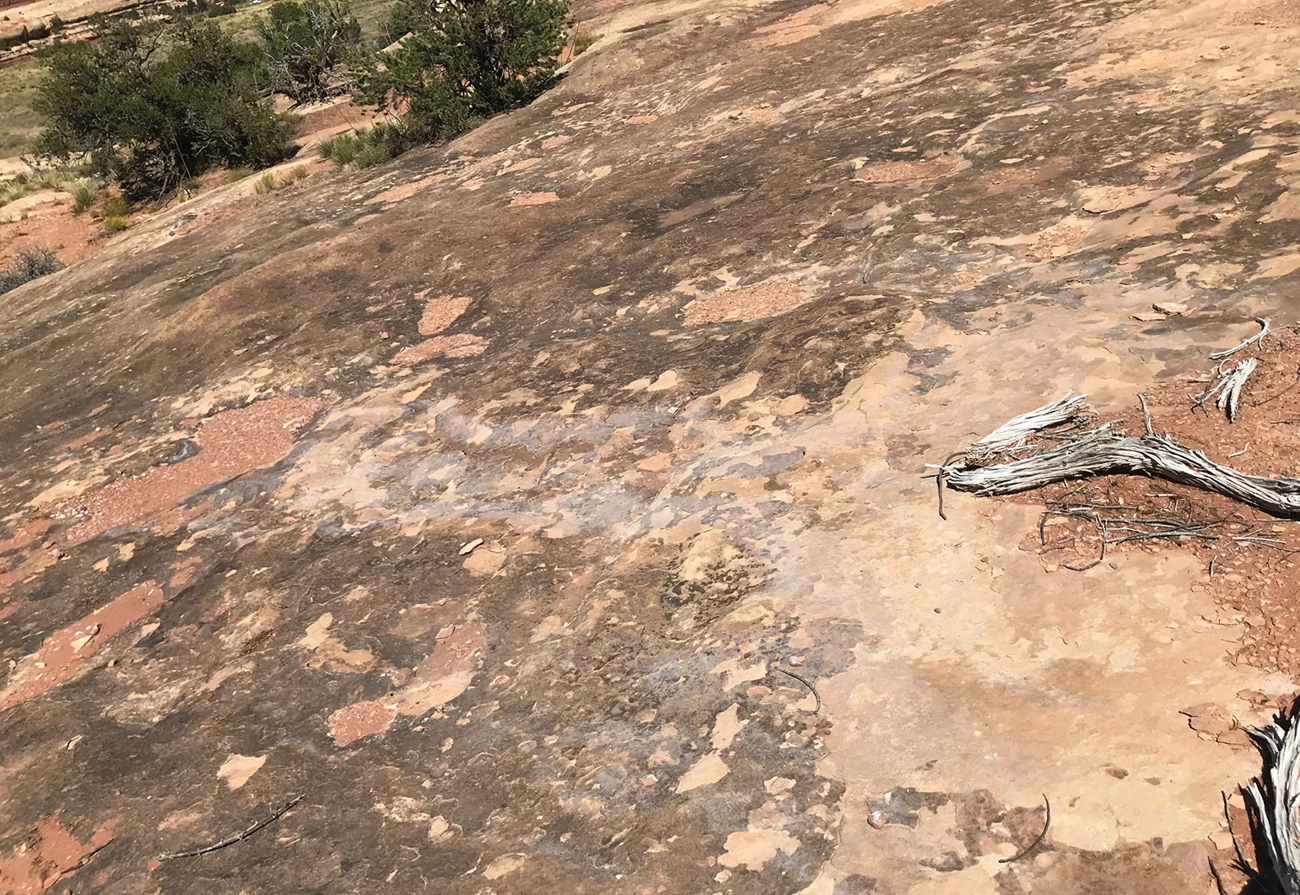
Left image
Silica glaze is typically a subtle light-colored surface. It has formed here where water flows over this nearly horizontal sandstone surface in Canyonlands National Park.
Credit: Photo by Allyson Mathis.
Right image
Other dark colored surface coatings likely consist of case hardening, heavy metal skins, rock varnish, and others.
Credit: Photo by Allyson Mathis.
Desert Varnish Occurance
Desert varnish can form on any type of rock that makes stable surfaces, including sandstone, limestone, basalt, and granite. Desert varnish can also protect rock surfaces from weathering and erosion. Varnished surfaces are particularly noticeable on sandstone due to the color contrast between the light-colored rock and the dark coatings.
Many national park sites contain petroglyphs which are rock carvings made by chipping through varnished surfaces to expose the lighter bedrock underneath it. For example, Petroglyph National Monument in New Mexico has as many as 25,000 petroglyphs made by ancestral Puebloan people and Spanish settlers.
Rock surface coatings including rock varnish, are also present in parks outside of desert climates such as the black streaks seen near Yosemite Falls in Yosemite National Park.
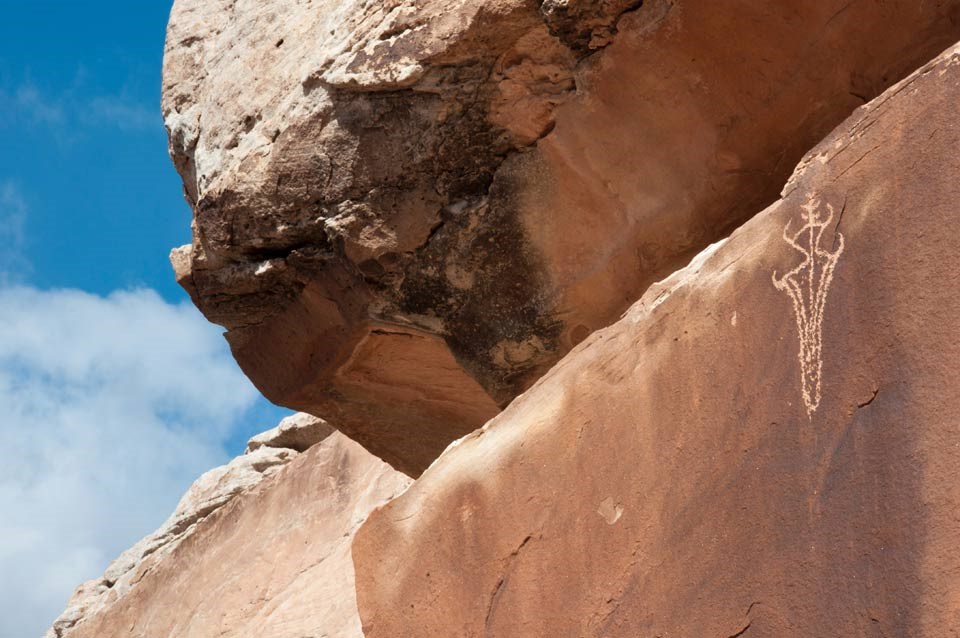
NPS/Neal Herbert
Photo Gallery
[Site Under Development]
Related Parks
-
Arches National Park (ARCH), Utah—[ARCH Geodiversity Atlas] [ARCH Park Home] [ARCH npshistory.com]
-
Canyon de Chelly National Monument (CACH), Arizona—[CACH Geodiversity Atlas] [CACH Park Home] [CACH npshistory.com]
-
Canyonlands National Park (CANY), Utah—[CANY Geodiversity Atlas] [CANY Park Home] [CANY npshistory.com]
-
Colorado National Monument (COLM), Colorado—[COLM Geodiversity Atlas] [COLM Park Home] [COLM npshistory.com]
-
Capitol Reef National Park (CARE), Utah—[CARE Geodiversity Atlas] [CARE Park Home] [CARE npshistory.com]
-
Death Valley National Park (DEVA), California and Nevada—[DEVA Geodiversity Atlas] [DEVA Park Home] [DEVA npshistory.com]
-
Dinosaur National Monument (DINO), Colorado and Utah—[DINO Geodiversity Atlas] [DINO Park Home] [DINO npshistory.com]
-
El Malpais National Monument (ELMA), New Mexico—[ELMA Geodiversity Atlas] [ELMA Park Home] [ELMA npshistory.com]
-
El Morro National Monument (ELMO), New Mexico—[ELMO Geodiversity Atlas] [ELMO Park Home] [ELMO npshistory.com]
-
Glen Canyon National Recreation Area (GLCA), Arizona and Utah—[GLCA Geodiversity Atlas] [GLCA Park Home] [GLCA npshistory.com]
-
Hovenweep National Monument (HOVE), Colorado—[HOVE Geodiversity Atlas] [HOVE Park Home] [HOVE npshistory.com]
-
Joshua Tree National Park (JOTR), California—[JOTR Geodiversity Atlas] [JOTR Park Home] [JOTR npshistory.com]
-
Mesa Verde National Park (MEVE), Colorado—[MEVE Geodiversity Atlas] [MEVE Park Home] [MEVE npshistory.com]
-
Mojave National Preserve (MOJA), California—[MOJA Geodiversity Atlas] [MOJA Park Home] [MOJA npshistory.com]
-
Natural Bridges National Monument (NABR), Utah—[NABR Geodiversity Atlas] [NABR Park Home] [NABR npshistory.com]
-
Navajo National Monument (NAVA), Arizona—[NAVA Geodiversity Atlas] [NAVA Park Home] [NAVA npshistory.com]
-
Petrified Forest National Park (PEFO), Arizona—[PEFO Geodiversity Atlas] [PEFO Park Home] [PEFO npshistory.com]
-
Petroglyph National Monument (PETR), New Mexico—[PETR Geodiversity Atlas] [PETR Park Home] [PETR npshistory.com]
-
Rainbow Bridge National Monument (RABR), Utah—[RABR Geodiversity Atlas] [RABR Park Home] [RABR npshistory.com]
-
Saguaro National Park (SAGU), Arizona—[SAGU Geodiversity Atlas] [SAGU Park Home] [SAGU npshistory.com]
-
Walnut Canyon National Monument (WACA), Arizona—[WACA Geodiversity Atlas] [WACA Park Home] [WACA npshistory.com]
-
Yosemite National Park (YOSE), California—[YOSE Geodiversity Atlas] [YOSE Park Home] [YOSE npshistory.com]
-
Zion National Park (ZION), Utah—[ZION Geodiversity Atlas] [ZION Park Home] [ZION npshistory.com]
Related Links
Reference
Tags
- arches national park
- canyon de chelly national monument
- canyonlands national park
- capitol reef national park
- colorado national monument
- death valley national park
- dinosaur national monument
- el malpais national monument
- el morro national monument
- glen canyon national recreation area
- hovenweep national monument
- joshua tree national park
- mesa verde national park
- mojave national preserve
- natural bridges national monument
- navajo national monument
- petrified forest national park
- petroglyph national monument
- rainbow bridge national monument
- saguaro national park
- walnut canyon national monument
- yosemite national park
- zion national park
- desert
- varnish
- desert varnish
- colorado plateau
- utah
- geology
- southeast utah group
- rock
- rock art
- petroglyph
- arid and semi-arid lands
